Mike Sutton tells the story of William Ramsay’s hunt for the noble gases
Discovering a new element has been the high point of several distinguished scientific careers, but William Ramsay (1852–1916) gained a unique position in this distinguished company by adding an entire group to the periodic table. Although his work on the atmospheric gases earned him Britain’s first chemistry Nobel prize, Ramsay’s later speculations were dismissed by many of his contemporaries. Nevertheless, during the century since his death some of those ideas have been partially vindicated.

Ramsay was a Scot, born into a Glasgow family with strong scientific connections. His father’s relatives manufactured dyestuffs, and his mother’s included several medical practitioners. Both grandfathers published works on chemistry, and one uncle was a distinguished geologist. William entered Glasgow University in 1866 and science was his primary interest.
Since the university’s laboratory facilities were limited, Ramsay acquired practical skills by working for eighteen months under the city’s public analyst, Robert Tatlock. He continued attending lectures for a while, but left without graduating to go to in Germany – visiting Robert Bunsen’s laboratory at Heidelberg and then studying with Rudolf Fittig at Tübingen, where a thesis on the nitrotoluic acids earned him a PhD in 1872.
After Ramsay returned to Glasgow – initially as a laboratory assistant at Anderson’s College, then from 1874 as an assistant tutor at the university – he published further research on organic substances. However, his attention was already shifting towards physical chemistry when he was appointed professor of chemistry at Bristol’s University College in 1880 – the forerunner of today’s University of Bristol. In the following year he married Margaret Buchanan, and they had a son and a daughter during his tenure there.
By 1887 Ramsay was the college’s principal, and had begun planning its progression to full university status. But in that year he accepted the chair of general chemistry at University College London, remaining there until his retirement in 1912. In 1902 he was knighted, and in 1904 he received the Nobel award. Thereafter, though busy as an adviser to government and industry, and as a campaigner for better science education, he continued doing research until shortly before his death.
Mystery gases
Although Ramsay’s greatest successes came in London, their foundations were laid at Bristol. His work there – much of it in collaboration with Sydney Young – included making precise measurements of the physical properties of many liquid and gaseous substances. Some significant conclusions about molecular association and dissociation emerged from these experiments, but the manipulative skill (particularly in glass-blowing) which Ramsay acquired along the way was crucial for his more celebrated discoveries.
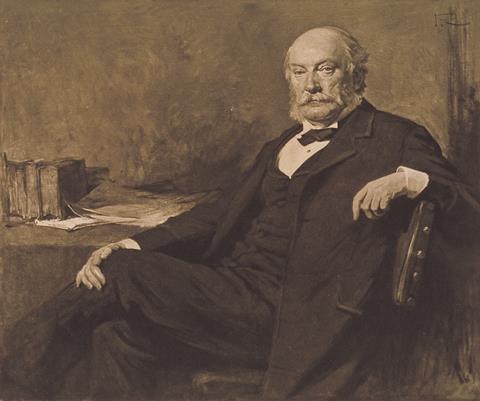
These began in 1894, following a communication from Lord Rayleigh. Rayleigh had been professor of physics at Cambridge University’s Cavendish Laboratory from 1879 to 1884, but was then an independent researcher with a private laboratory and an appointment at the Royal Institution. Having discovered that atmospheric nitrogen was denser (by about 0.5%) than nitrogen from chemical compounds, he suspected the presence of a hitherto unknown gas. Later, he learned that Henry Cavendish (after whom the Cambridge laboratory was named) had achieved a similar result many years before.
Cavendish had noticed that when the known atmospheric gases were chemically removed from a sample of air, a tiny bubble remained. He could not identify it, and for a century it was forgotten. Rayleigh and Ramsay agreed to pursue this gas together, and Ramsay isolated it by passing atmospheric nitrogen over red-hot magnesium to form magnesium nitride. He found the gaseous residue ‘an astonishingly indifferent body’ – even fluorine would not combine with it.
Following a preliminary report at the 1894 British Association meeting, Rayleigh and Ramsay announced the discovery of a new element to the Royal Society in January 1895. Their name for it – argon – derived from the Greek word for ‘idle’. Although spectroscopic analysis by William Crookes confirmed that the new gas had a distinctive line-pattern, some critics disputed its elementary status. Ramsay ignored them, and was soon pursuing another mystery gas.
Chemists, know your place!
In February 1895 the British mineralogist Henry Miers alerted Ramsay to an unusual property of cleveite (a mineral consisting mainly of uranium dioxide). William Hillebrand – a chemist with the United States Geological Survey – had noticed that heating cleveite with sulfuric acid generated an unreactive gas, which he presumed was nitrogen. On learning this, Ramsay carefully finished the experiments he was working on, obtained a sample of cleveite from a London mineral dealer for three shillings and sixpence and soon he had a sample of Hillebrand’s gas.
Two days of chemical analysis eliminated all known gases except argon from consideration, but the new gas’s spectrum was not argon’s. Within a week, Crookes confirmed that it was helium, an element identified spectroscopically in the sun in 1868, but previously undetected on earth. The discovery of terrestrial helium was announced to London’s Chemical Society in March 1895. By then Ramsay believed that further ‘inert’ gases, occupying a new group in the periodic table, were awaiting discovery.
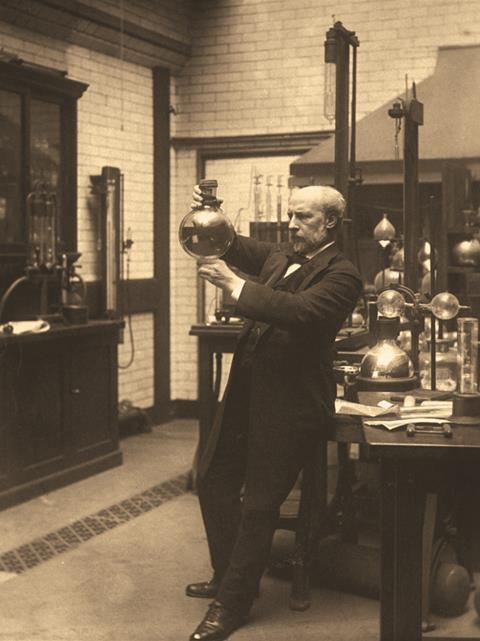
His ideas were vigorously opposed by James Dewar, professor of chemistry at London’s Royal Institution. Anonymous attacks on Ramsay’s work also appeared in Chemical News– probably written by Dewar’s friend Henry Armstrong. Rayleigh soon abandoned this chemists’ quarrel and returned to the more gentlemanly world of physics where – as he later commented – ‘second-rate men seem to know their place’. Ramsay, however, battled on.
One obstacle to argon’s acceptance as an element was its apparent atomic weight. Its vapour density (relative to that of hydrogen) was 19.9, which indicated a molecular weight of 39.8. But the ratio of its two specific heats – at constant pressure, and at constant volume – implied that the gas was monatomic. This gave argon an atomic weight higher than its neighbour, potassium, and hence a somewhat incongruous position in the periodic table.
Two other pairs of adjacent elements – tellurium and iodine, and cobalt and nickel – were similarly misplaced in the table. Many chemists believed that their published atomic weights were erroneous, but Ramsay’s critics rejected this explanation for the argon–potassium anomaly. Instead, they argued that the new gas was an allotrope of nitrogen, with the formula N3. Two decades later, Frederick Soddy’s introduction of the concept of an isotope would explain the anomalous atomic weights, and Henry Moseley’s determination of atomic numbers would rationalise the periodic table. But meanwhile, the onus remained on Ramsay to justify his claims.
Hail to the chief
To confirm the status of argon and helium – and to isolate any further atmospheric gases – Ramsay needed large-scale facilities for liquefying and fractionally distilling air. But Britain’s leading expert in this field was his opponent Dewar, inventor of the vacuum–jacketed container still known as the ‘Dewar flask’. Instead, Ramsay turned to William Hampson (with whom Dewar was also in dispute).
Hampson was an Oxford classics graduate who trained as a barrister before emerging as a scientist. In 1895 he patented an innovative process for liquefying gases and licensed it to Brinn’s Oxygen Company (later to become the industrial giant British Oxygen, now BOC). Hampson provided advice, and some liquid air, but Ramsay and his assistant Morris Travers built their own distillation apparatus – much of it improvised from recycled equipment.
Travers was one of many colleagues, technicians and research students who worked with Ramsay over the years. They referred to him affectionately as ‘the chief’, and he returned their loyalty. When announcing the discovery of argon he thanked several assistants for their contribution, particularly commending Percy Williams for his ‘skill in manipulation and great care’. A decade later, in his Nobel lecture, Ramsay generously acknowledged the help of ‘Dr Travers, then my assistant, now my successor in the Bristol chair’.
The challenge facing Ramsay and Travers was greater than they realised. Although argon is relatively abundant, forming almost 1% of atmospheric air, the other noble gases are present in tiny amounts – neon 20ppm, krypton 1ppm and xenon 0.1ppm. Nevertheless, by mid-1898 they had isolated enough of these gases to map their spectra and confirm their chemical inactivity.
Unfortunately, Ramsay also briefly claimed the discovery of another element, ‘meta-argon’, with an atomic weight slightly less than argon’s and different lines in its spectrum. Others could not confirm this result, and Ramsay soon found that the anomalies were due to traces of carbon monoxide in his argon sample. On announcing this he commented ironically: ‘Should we under such circumstances regret the publication of an error? It seems to me that an occasional error should be excusable. No one can be infallible; and besides, in these conjectures one has always a large number of good friends who promptly correct the inaccuracy.’
Curious emanations
Despite this setback (and Travers’ departure for an independent career), Ramsay continued his quest. While he had been studying the noble gases, several investigators – notably Ernest Rutherford and Pierre and Marie Curie – had found that some radioactive elements released a heavy gas, which Rutherford called ‘emanation’. Since it appeared to belong to the noble gas family, it naturally attracted Ramsay’s attention.
This radioactive gas took different forms – ‘thorium emanation’, ‘radium emanation’ and ‘actinium emanation’ – which were eventually identified as isotopes of the same element. Radium emanation – later simply called ‘radon’ – was the longest-lived, with a half-life of 3.8 days. In 1903 Ramsay joined forces with Rutherford’s former collaborator Frederick Soddy to study it.
They found that a sealed container of radon, if left standing for a time, eventually generated the characteristic spectrum lines of helium. This important result supported Rutherford’s suggestion that the positively charged alpha particles emitted by radon (and other radioactive elements) were actually the nuclei of helium atoms. But after Soddy moved on to Glasgow University in 1904, Ramsay’s later work on radioactivity proved less fruitful.
Ramsay hoped that bombarding other elements with radon’s alpha particles might change their chemical identity. His eagerness led him to announce some spurious ‘discoveries’– for example, in 1907 he claimed that electrolysing a copper salt dissolved in water previously exposed to radon converted the copper into lithium. Other experimenters could not replicate these results, and physicists (including Rutherford) dismissed them as impossible on theoretical grounds.
Nevertheless, not all Ramsay’s later work was unsuccessful. In 1910, assisted by Robert Whytlaw-Gray, he measured the density of radon precisely enough to establish that its atomic weight differed from that of its parent element, radium, by the weight of one helium atom. Given the tiny size of his sample, and radon’s short half-life, this was a remarkable achievement. It also supported Rutherford’s conviction that alpha-particles were helium nuclei.
Sealed for 100 years
On 10 June 2004, a commission of the French Academy of Sciences opened a sealed packet, number 5038, and discovered Ramsay’s first communication of an unidentified, heavy and inert gas, from July 1894.

The Academy has a system called the pli cacheté, or sealed packet, whereby a scientist can deposit an account of an idea or a discovery. This would be sealed, numbered and kept until it could be opened by the depositor if they wanted to establish a prior claim to an invention. The system started in 1735 and by 1976, to keep the growing number of many thousands in check, the Academy adopted a procedure by which plis cachetés are opened if they have remained sealed for 100 years or more.
The work is described in a single page in French, in Ramsay’s handwriting. He postulates that the unknown might be N3, (comparable with ozone, O3), formed perhaps as a by-product in the reaction with magnesium; or it might be a new element which, if it were, he would call eikazote, with the symbol Ez. Ramsay wrote that he wanted to check the yields of the magnesium nitride and the heavy gas against the amount of nitrogen which has reacted.
By 4 August, he had done those experiments and decided that he had isolated a new elementary gas, and he wrote to Rayleigh, beginning ‘I have isolated the gas…’ The whole work had thus been done in just one month.
Alwyn Davies is an emeritus professor at University College London
Pushing the limits
Ramsay retired in 1912, but his love of hands-on experimental work, which was the key to his success, was also fatal. No precautions were taken in handling the radioactive material; radium was even put into cosmetics and pharmaceuticals, and Ramsay’s notebook from that period is still radioactive. He developed cancer of the jaw and after two operations he died on July 23 1916.
Looking back from a century later, his career seems a mixture of dazzling successes and embarrassing blunders. Yet his aspirations, though over-optimistic, were not unreasonable. Only a dozen years after Ramsay’s failed ‘transmutation’, Rutherford was converting nitrogen atoms into oxygen atoms by firing a beam of alpha-particles at them. The development of powerful particle accelerators would eventually make such transformations a routine procedure, but meanwhile others besides Ramsay let their imaginations outrun their capabilities.
Researchers who push the techniques of their day to the limit always risk such disappointments. Ramsay’s successes, however, were far more significant than his errors. Yet even he could scarcely have imagined that 50 years after his retirement another British chemist, Neil Bartlett, would finally persuade the so-called ‘inert’ gases to form compounds. That, however, is another story…
Mike Sutton is a historian of science based in Newcastle, UK

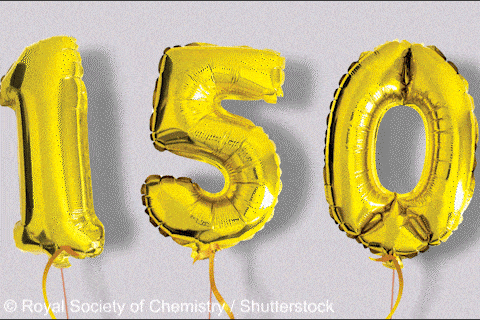
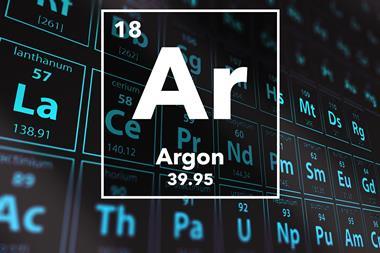
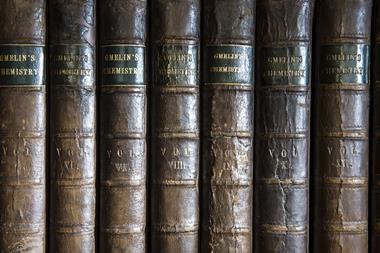
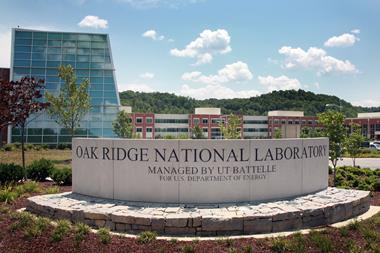

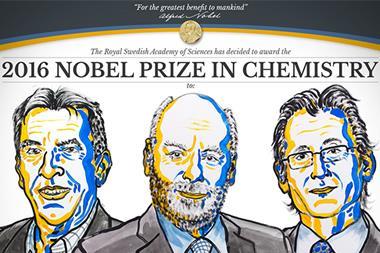




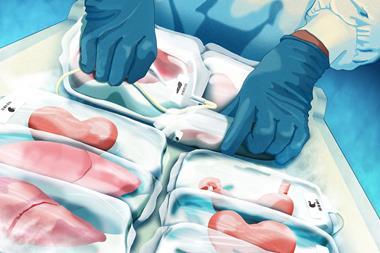

No comments yet